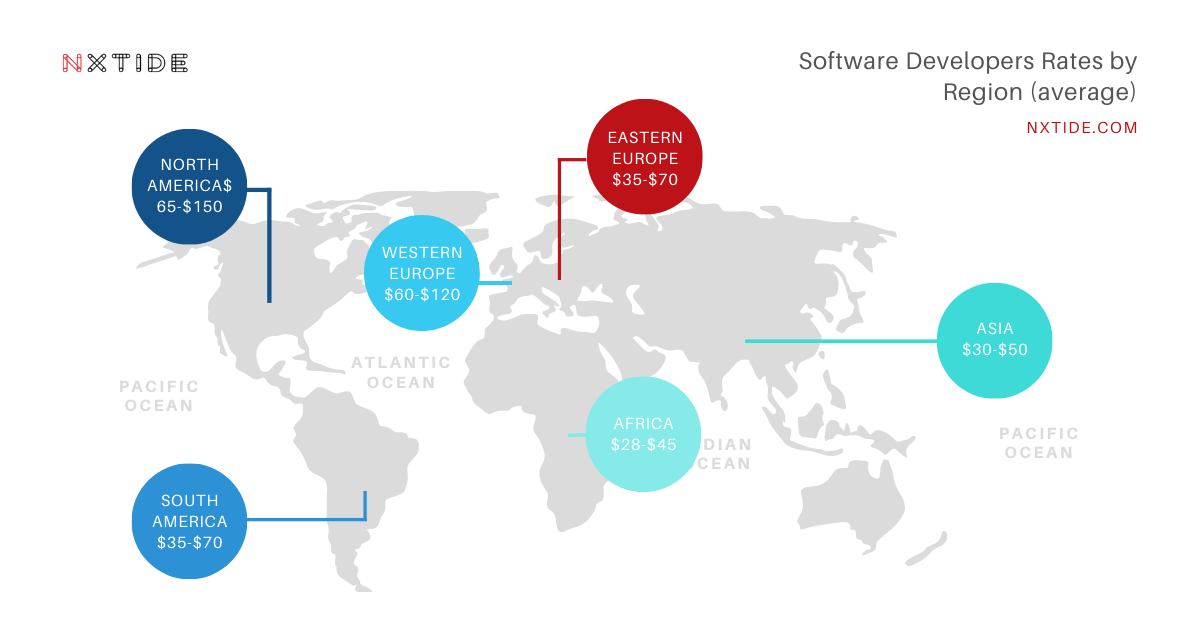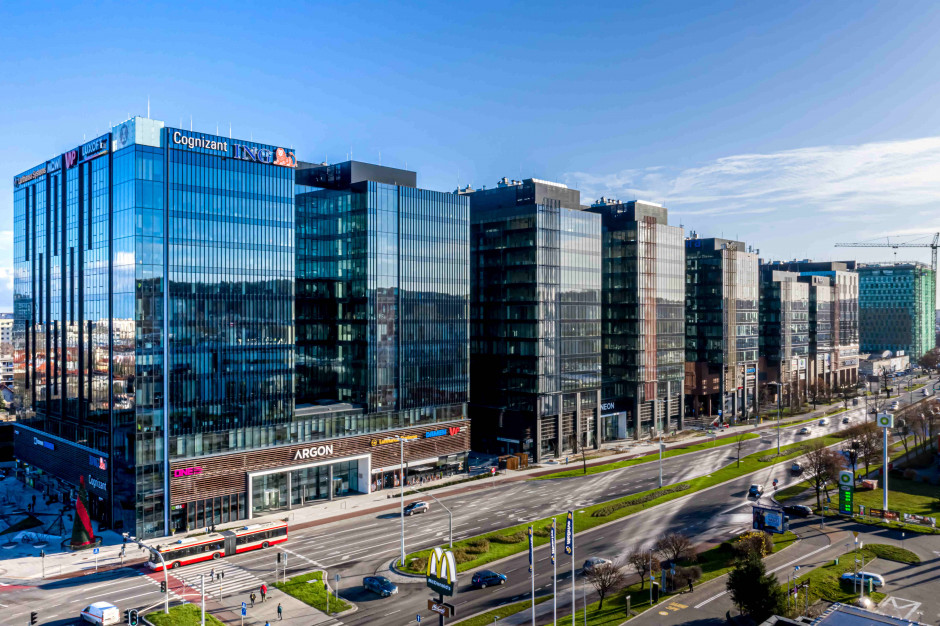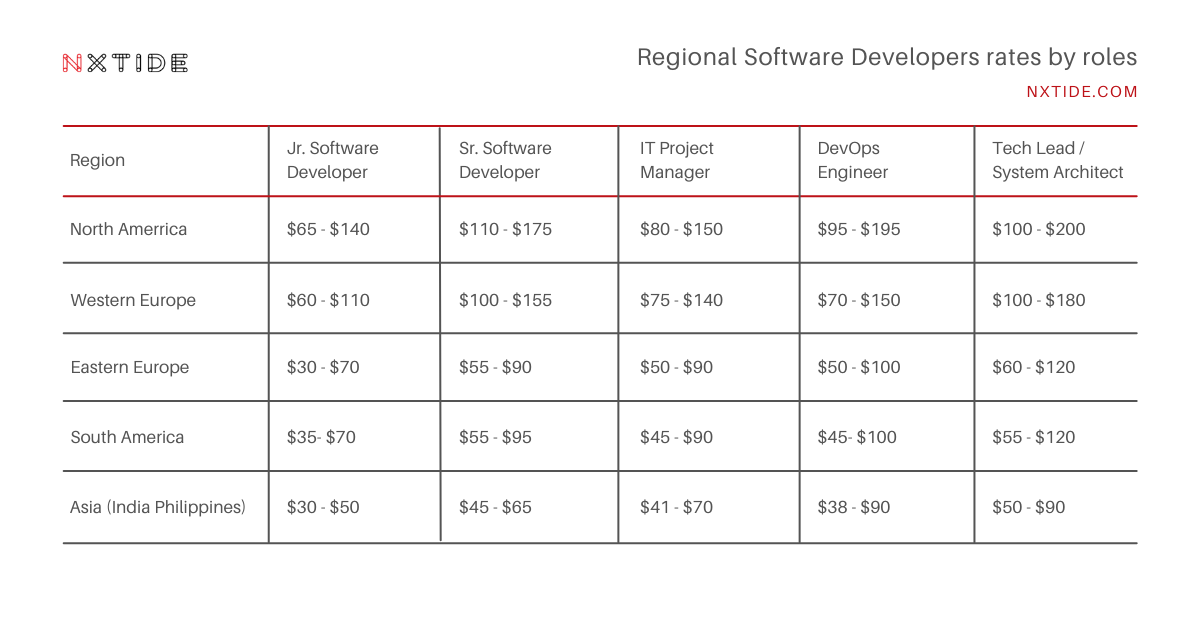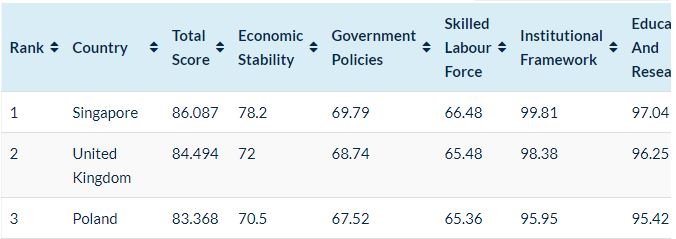Build-Operate-Transfer Model: the New Trend in IT Outsourcing Services

Build Operate Transfer – the New Trend in IT Outsourcing Services
With the global and local IT skills shortage getting more serious every year, as a Business Manager or Founder, you may find yourself in a position where you must set up a nearshore or offshore team in a short period of time (eg. product is innovative and need to be done in 24 months). These goals can be achieved only by setting up software development teams or software development hubs in other countries with higher IT skills potential (eg. Brazil, Poland, Ukraine, Bulgaria). The Build Operate Transfer (BOT) model is a complex approach in IT project delivery. In contrast to traditional models, it consists of setting up independent and operational subsidiaries of the company in remote locations. If you are considering setting up a company in Poland, read more about the decisive factors, the advantages of this model and its phases.
The origins of the Build Operate Transfer model
Technologies are evolving at a breathtaking pace and the number of businesses that want to adopt them, get digitized, and thrive through modern progress is rising. The same evolution goes for service delivery as well. Multinational organizations, enterprises, and medium to small companies all want to gain a competitive advantage in the market and turn to software development outsourcing to adopt innovative software and improve efficiency as well as boost revenue. software development With the growing demand for services, more diverse and innovative service delivery models appear as well to leverage external expertise effectively. And one of those innovative models with its growing popularity is called build-operate-transfer model in IT.
The software outsourcing Build Operate Transfer (BOT) model is defined by Gartner* as “a contractual relationship in which an organization hires a service provider to set up, optimize and run an IT or business process service delivery operation with the contractually stipulated intent of transferring the operation to the organization after an agreed period of time. BOT, as a hybrid model, combines elements of the “build” option (that is, “insourcing”) and the “buy” option (that is, outsourcing).
The definition of Build Operate Transfer model
The Build Operate Transfer term defines the collaboration between two business partners when one of them (service provider) builds, sets up, and runs a certain service delivery operation together with a team, which is responsible for completing the tasks. This team, including all its processes, resources, and intellectual property is then transferred into the other company’s (buyer) organizational structure after a period determined in the contract signed by both partners.

Build-Operate-Transfer refers to both the operational model and the process itself. Although it’s been used primarily to describe partnerships between public agencies and private companies, it’s now widely used in the IT industry as well. What’s important to note is that the transfer phase happens when all elements of the organisational set up are in place, and the team is fully operational. The fact that you get a finished and working structure that you can easily and conveniently include in your company is perhaps the biggest benefit of the model – more on that later in this article. Before the transfer phase, there are two crucial stages of making the BOT model work for you. They are the Build phase and the Operate phase. Let’s go through these to find out what they really mean. BUILD PHASE This is the stage where you plan, analyse and set things up, so that everything runs smoothly later on. Once you agree on the terms and the scope of your collaboration, you work with your partner to complete a thorough analysis of your requirements and needs. You also share as much as you can about your company culture, your processes, the technologies your teams use and your business goals. Once the information is fully transferred, your partner starts the process of securing the necessary technologies, team members, office space and equipment, depending on what your project calls for. Learn more about the Build Phase OPERATE PHASE The Operate phase can last for as long as you need it to be and usually it’s much longer than the Build phase. This extended period gives both sides enough time to make sure that all processes are aligned. Your business partner is responsible for all of them at this stage, so you need to ensure that you communicate as often as possible, preferably on a daily basis, to ensure that you’re on the same page. During this phase you must also secure time and resources for training the team to fully support them as they’re setting up. This usually requires help from your or your partner’s HR department. They can conduct a series of workshops followed by with 1-on-1 meetings with all the team members. TRANSFER PHASE This is the last stage of the collaboration, and it’s the point at which you transfer all resources into your organisational structure within a certain time frame and following the procedure defined in the initial partnership contract.
Build Operate Transfer vs other IT Outsourcing models
There are plenty of other outsourcing models, such as co-sourcing or staff leasing, team augmentation, comprehensive sourcing, and facilities outsourcing, which can be applied. However, in this case, we will focus mainly on its IT BOT outsourcing version. The companies that prefer to proceed with the Build Operate Transfer model in software outsourcing often have a vision or a plan to operate their own entity in an offshore or nearshore location. However, this means that they would want to strengthen their capabilities first and tackle or mitigate the oft-found risks that newbies have during the start-up stage. Thus, there is a need for such a company to undertake a contract with a potential, local outsourcing company to establish and operate shared services or software hub for a certain period.
Often, the software outsourcing Build Operate Transfer project lasts until the team is adapted to the company’s methodologies, processes, as well as tools. This period usually lasts 12-24 months till the owner company is ready to take over and fully operate the entity that was once being managed by the local IT partner. When that time comes, the entire team will be then officially transferred.
So, how does the BOT model differ from a dedicated software development team partnership where you have a group of people working within your business partner’s organisational structures? On the surface, it doesn’t look that different. In both models, you have a team that’s not part of your company, working exclusively on your project. The two main differentiators are: keeping your intellectual property even after you’ve transferred the individuals into your structure, and, the knowledge and resources transfer. With the dedicated team model, once you end your collaboration with an external services provider, all of the expertise resources are gone. If you want to rebuild these within your own business, it takes a lot of time, patience and most importantly, skills to do it the right way.
The main reasons behind IT Outsourcing and Build Operate Transfer model
1) Global IT skills shortage
As of 2021, the global talent shortage already amounts to 40M skilled workers worldwide. By 2030, the global talent shortage is predicted to reach 85.2M workers. Сompanies worldwide risk losing $8.4T in revenue because of the lack of skilled talent. The main reason for this is 90% of all operations in an average organization are supported by software, so there is a lack of tech experts ready to deliver quality services. Worldwide market and technology trends are the main factors affecting the rising global talent shortage. According to a recent survey, 87% of organizations are already experiencing a talent shortage or are expecting to face it within a few years.
Most organizations are already trying to address the talent problem. Hiring developers as contractors and freelancers have been the most widely used tactic to overcome talent needs in the past five years. But this is still not enough. Many top global companies already decided to make more structural decisions by setting up their Software Development Hubs or R&D Centers in locations with more IT-talent potential (CEE Europe, Brazil, Malaysia)
2) Security and IP protection concerns regarding traditional outsourcing
Security and intellectual property protection may also cause some concerns preventing you from swiftly adopting a pure IT outsourcing strategy (tailored rather perform specific parts of the project). According to the UK IT Outsourcing Survey conducted by PA Consulting and Whitelane Research, although the sector itself represents more than £15 billion of annual IT spend across more than 240 of the largest users of IT services in the UK, there are two main concerns among clients. 75% of them worry about ‘retaining and owning their own intellectual property, and 75% want to keep ‘agile ways of working as their main organizational model.
Choosing and setting up the right outsourced team sounds like an impossible task, especially if you’re pressed for time, but there’s a little-known collaboration model that may fit your needs by allowing you to keep the intellectual property rights within your company and to operate following the Agile principles.
3) Long-term, permanent cooperation
To complete this objective, you might be looking for operational models to follow or a reliable, permanent technological partner (nearshore / offshore vendor), that will not just offer five-star services from anywhere on Earth, but will also share your organizational values, procedures, and all potential risks of this ambitious business endeavor. We will discuss this complex matter further in the next paragraphs.
Who should consider the Build Operate Transfer model?
The BOT (Build Operate Transfer) model, which was discussed in the article below, is a business model that can assist organizations wanting to establish an offshore or nearshore software development facility.
The Build Operate Transfer BOT could be a great solution when considering:
1) extending existing local software development team capabilities by outsourcing skills from remote freelancers (long term)
2) outsourcing software development, wholly or partially, and have concerns about the impact this may have on your business, in the short and a long-term
3) setting up and operating permanently a remote software development hub abroad
The main benefits of the Build Operate Transfer model.
The Build Operate Transfer model is without a doubt the most secure and convenient collaboration model out there. It’s also the most advanced and long-lasting one. Let’s now analyze key benefits based on business practice.
1) Better Company culture alignment
As we mentioned in previous paragraphs, one of the main concerns may be that you won’t be able to keep your way of working and company culture intact while you’re outsourcing some parts of your business to a business partner. This shouldn’t be the case with BOT as the model requires you to share your best practices, process, and communication frameworks with the outsourced team right from the start. This makes the transfer stage much easier as you don’t need to spend much time familiarising the team members on how your company operates and how the information is exchanged between employees.
2) Full control over structure and processes
You can share your existing project management process, Agile methodology processes, and methods with the newly created, local team. You simply need to agree on what you’d like the operational structure and processes to be within your partner’s organization, so there won’t be any concerns about things not being done the usual way, once you go into the transfer phase of the BOT model.
3) Real bond between the Team and owner Company
From the first phase of BOT, the Team knows your brand, your values, and the future. This helps to create a much stronger bond between you and your offshore / nearshore Team than in temporary outsourcing contracts (IT contractors).
4) Flexibility in management and responsiveness to changes
Agility and flexibility are kings. Covid-19 pandemic and the related crisis has confirmed that you need to stay agile and respond to what’s happening outside of your company as quickly as you possibly can. That’s why the Build-Operate-Transfer model provides you with enough flexibility to allow you to either transfer/include the team and resources much quicker than the agreed time period or, prolong it within the outsourcing cooperation model if needed.
5) Operational risk management.
Build Operate Transfer model is a collaboration tool specifically aimed at companies who have concerns related to security and IP protection with traditional outsourcing.
6) Reduced time to market.
You spend less time setting up your new local entity and managing all software development team recruitment. You can focus on priorities and outsource local projects to a local IT partner immediately after signing the contract. That means that you save time and resources on your side simultaneously developing team, launching applications onto the market faster, hence improving customer satisfaction and business performance in general.
7) Cost-effectiveness and cost control.
Due to the fact that it is your company that actually owns and operates the software development facility, it is easy for you to monitor and control all the costs. You can ensure that your budget is respected and that fixed prices for this new facility are agreed upon with your partner before starting work on any projects. Outsourcing development does not mean transferring all risks related to potential overspending or unexpected high project costs.
8) Acquiring local knowledge through a trusted source (local Partner)
The know-how of what works and what doesn’t in the local IT market is crucial for the success of any BOT project. It may be that the processes or communication style you’ve chosen for your company will not work for external teams located in other countries, even if you run them on an offshore basis. Having a reliable and experienced local IT partner is definitely an advantage. (eg it can directions on how to adapt some parts of your business operations to regional specifics) particularly if working within the Build-Operate-Transfer model is your first dive into building an international business/company.
Long-term advantages of choosing the Build Operate Transfer model.
The Build Operate Transfer is a form of Nearshore / Offshore Development Center model, which is considered the future of remote work and a solution to skill shortages. The BOT project partnership framework allows companies to mitigate risks, find new opportunities to challenge competitive advantages, and lower the cost of software development. But this is not all. The final transfer phase does not mean that the owner company and local IT partner can’t collaborate further.
NxTide for example still supports the majority of its customers by providing other crucial services like team scaling, training, and business support. This type of cooperation wouldn’t be possible without building real trust and mutual respect between both parties of the Build Operate Transfer contract.
Phase 1: Build
First, we setup your brand on our career website to make sure candidates are well informed. Then we run marketing campaings alongside direct search activities to attract the best talent to your future IT Hub.
Phase 2: Operate
Our Project Managers takes care of the onboarding, employee wellbeing and team building activities. Our role is to make sure everything runs smoothy so that you can reach scale with ease.
Phase 3: Transfer
Upon your request, we transfer the fully operational IT Hub to the Client making you the owner of the of it. You can can still take advantage of our support, so the cooperation and scaling can be continued.
The 3 phases of the Build Operate Transfer model.
The Build Operate Transfer model is a combination of building your team/company in-house and traditional outsourcing provided by a third party. Let’s now describe each phase of the whole process:
1) Build phase
The main purpose Build stage of the Build-Operate-Transfer outsourcing concept is to create an offshore or nearshore software team and equip it with everything it needs to become successful. This can contain both tangible (digital devices, office space) and intangible (knowledge transfer, partner business connections) resources. The success of this phase is crucial for the whole project to be finished within a reasonable time frame. Dependent on the scope the project usually last 1-3 months, when local IT partner tries to find the best team members for the positions. Both parties can agree whether organize additional office space or just use partner infrastructure. The Build stage is often divided into two simultaneous processes. One is centered around building the perfect team for the project and it can include sourcing the candidates, interviewing them, and then hiring with all legal activities completed. The other is focused on transferring resources and knowledge, so the offshore / nearshore team can complete their tasks as they would if they were a part of your company.
2) Operate phase
This is the phase where the real work happens, it’s also the crucial stage of the collaboration. Although this stage has many variations depending on the BOT agreement between parties – let’s take o closer look at some typical operations:
a) Team expansion and training – proportionally to the growing project needs
b) Project planning and first deliverables
c) Process implementation to ensure the technical abilities of the team and the project’s business maturity
d) The initial transfer – lead programmers, project managers, and team leaders into the partner’s company The goal here is achieving stability and a fully operational development process. This will be crucial down the line when you move to the Transfer stage and will make it smoother.
Communication is one of the most crucial aspects of the Operate stage. You maintain all of the teams working in unison rather than as separate groups by making sure that you connect with your business partner and team members on a daily basis, through weekly or bi-weekly retros and monthly all-hands meetings.
The project in the Operate stage can be also managed by the owner company. Actually, this situation happens pretty often. The local IT partner is more focused on delivering valuable team members on time and advising the client rather than project management.
3) Transfer phase
This is a closing stage of the Build Operate Transfer model where after a thorough review, the teams that were working on your project are now being included in your company. Your vendor’s employees are now employed by you. If everything goes well in the two earlier stages, this stage should be going very smoothly.
This is also the stage when you look back and analyze the partnership and all phases. But is it the end? Good relations, keeping project deadlines and general team success usually coincide with extending cooperation between both companies to other tasks like team scaling, ad hoc recruitment or additional advisory services, training.
The Build Operate Transfer operational plan
If the Build Operate Transfer approach sounds like a good fit for building your offshore/nearshore team, the next question is likely to be, “Where do I start?” We’ve put forward 8 of the most essential considerations you’ll need to address, ideally with assistance from a reputable local BOT service provider.
Aligning objectives and scope.
The intention is to define a project framework, plus an idea of the aims and scope. Here, long-term goals can be identified, along with the necessary roles and capabilities. These are the foundations for the overall running of the project.
Defining processes, organizational structure, and governance.
This step establishes the structure of the project for the future, including:
– The role of the team abroad
– The size of the team in relation to the overall project
– Timeframes and milestones
– Details of the services or products you develop
– Investment and budget specifics
Detailing these points makes a project structure available, which means the project can begin to take shape.
Establishing the local subsidiary.
There’s a degree of flexibility here as you can create your local entity while starting your BOT journey, or at the moment of transfer to the parent entity. The choice is yours.
Office setup and back-office.
Having a physical presence abroad requires compliance with local laws, so it’s wise to choose a respected local partner to set up your office and run the back-office operations (i.e. operations management, local administration, and office space).
Team recruitment and onboarding.
Finding the right employees is at the heart of the operation. The choice is yours to set up a Talent Acquisition team and recruit your new employees, or to engage a local recruitment agency (local agencies can allow for faster recruitment, with detailed knowledge of the local workforce and employment guidelines).
Collaborative team operations.
This is the point when operations and projects are up and running in your new office. Extra care will have been needed to ensure that processes defined earlier work properly and that team members are working according to their roles. Process and structure may need adjustments. Effective communication within your organization is essential, and the same is true in the collaboration between the parent entity, the BOT provider, and the third parties (i.e. accountant, office landlord, vendors).
Reporting the progress.
Throughout the early phases of a project, it’s difficult to get buy-in from senior management. However, operations are up and running, and the offshore team’s interim results are now visible. At this time, the parent entity’s management will want feedback. Be ready to provide reports and audits as a method to fulfill corporate criteria while also giving visibility to the offshore / nearshore operation’s progress.
Transition planning and execution.
Due diligence, document preparation, and knowledge of all the provider’s activities are required. Make sure that everyone on the team understands what they’re doing.
As you can see the process contains many phases and critical steps to take. Now we can focus a little bit more on the time needed to go through the full BOT process cycle.
Creating the Build-Operate-Transfer Software Hub in Poland

Poland has an extremely interesting location (especially for BOT model) between west and east. GMT+6 from New York, GMT+1 from London, GMT+0 from Berlin, Amsterdam, or Stockholm – making it a much better option than India or China. Poland is also a part of the EU which is a good proof of stability, security, and western work standards.
Although Poland is a member of the EU since 2004, it has still to offer very attractively labour costs even in the IT industry. The average rates are around 50% lower than in Europe and 60% lower than in the US. Yes, it is true that you could find more competitive countries for outsourcing – but in IT the end game is to find quality for an attractive price – not the opposite. Considering all cons of Poland the rates are still a bargain. The below table shows the differences for 5 countries.

Kraków
Over 0,8M population, 13% of total IT Engineers supply

Warsaw
Over 1,8M population, 24% of total IT Engineers supply

Wrocław
Over 0,7M population, 12% of total IT Engineers supply

Katowice
Over 1,8M population, 9% of total IT Engineers supply

Poznań
Over 0,7M population, 8% of total IT Engineers supply

Łódź
Over 0,7M population, 7% of total IT Engineers supply

Gdańsk
Over 0,6M population, 6% of total IT Engineers supply

Bydgoszcz
Over 0,5M population, 4% of total IT Engineers supply
Software development & IT outsourcing shift towards CEE region
According to the global IT workforce, there are more than 856,500 software developers in the CEE region, of which Poland has the biggest share, with almost 460,000, which makes it the largest IT hub. Please take a look at the most interesting cities based on IT talent saturation:
In recent years the Central-Eastern European region has become one of the top destinations for software development. Investors, mature businesses, global corporations are all willingly outsourcing IT projects, software development teams or the whole R&D centers to selected CEE countries, such as: Poland, Ukraine, Romania, Slovakia or Czech Republic.

The main reasons behind this trend are:
Large talent pool of skilled developers, project managers, UI/UX designers (over 1 Milion)
High-quality of work and familiarity with western standards
Rich educational potential including Information Technology
Excellent language skills
Favorable location and rates
Vibrant business environment & good infrastructure
Let’s now analyze all these arguments one by one in the next paragraphs.
Large IT talent pools in CEE region
According to the global IT workforce, there are more than 856,500 software developers in the CEE region, of which Poland has the biggest share, with almost 460,000, which makes it the largest IT hub. It seems that the market is still full of opportunities for potential employers to enter and take advantage of that.. Here is the list of the most interesting cities based on IT talent market share:
Top-quality of skills and high standards of work
The HackerRank survey placed the Polish developers among the top three best developers in the world, specializing in the various back-end, front-end and object-oriented languages such as Java, .Net, Python, JavaScript, Objective C, C++, and Ruby. Therefore, when you are contracting a Polish IT outsourcing centre, you are tapping into a wealth of knowledge and experience for any programming need your company may face. Poland is also among top locations for innovative technologies like blockchain, AI.
Strong education and language skills
Poland and all post-soviet contries have developed very strong, STEM, public eduational institutions. In addtion to that the majority (> 80%) of high shool graduates decides to continue their educational path at least to bechalor / engineering degree level. According to the latest data there are over 450 universities in Poland itself. The university programmes has been harmonized with the EU Bologne standards to make it easier to compare different skills and diplomas. All of this proves the ambitions and enormous potetnial that lies in this region of Europe.
Favorable location and rates
Poland has an extremely interesting location between west and east. GMT+6 from New York, GMT+1 from London, GMT+0 from Berlin, Amsterdam, or Stockholm – making it a much better option than India or China. Poland is also a part of the EU which is a good proof of stability, security, and western work standards.
Although Poland is a member of the EU since 2004, it has still to offer very attractively labour costs even in the IT industry. The average rates are around 50% lower than in Europe and 60% lower than in the US. Yes, it is true that you could find more competitive countries for outsourcing – but in IT the end game is to find quality for an attractive price – not the opposite. Considering all cons of Poland the rates are still a bargain. The below table shows the differences for 5 countries.

Vibrant business environment and solid infrastructure
The prestigious CEO Magazine ranked Poland in the top 3 the world’s best countries to invest in and to do business in for 2020. Despite the economic challenges introduced by COVID-19, Poland’s economy showed enourmus resistance and strenght which proved very promising for investors. This ranking compared 80 economies according to business and investment environments, including institutional framework. There were assessed such factors as investor protection, market potential, infrastructure, taxes, workforce, quality of life, technological readiness, corruption and freedom. (table beloow):

IP legal protection standards
Many of companies around the world have exerienced an infringments of their intelectual property and patent rights. That is why there are still doubts when making crucial decisions like opening a nearshore Research & Development IT Hub in “emerging countries”. When it comes to CEE region this is not a matter. The coutries aligned their laws to international (US) and EU standards to create fully safe and stable environment for business.

Finding a Build Operate Transfer local partner.
You’d probably find hundreds of local HR agencies or IT outsourcing providers in every location in the world. But it isn’t that easy to find a specialized, local IT BOT partner. Let’s now analyze what describes the perfect BOT provider and what is worth analyzing from the owner company perspective:
1) BOT Specialization
As we mentioned earlier – a reliable provider is focused on the BOT model. In other words, there is no option for short-term outsourcing or acquiring 1 developer. The real Build Operate transfer partner should focus its efforts only on “building long-term software development teams” for future transfer. Specialization refers also to one specific industry – IT & software development. Providers offering BOT in multiple branches will never build the necessary level of competence.
2) Real know-how
BOT and team-building projects require much more IT and management knowledge from the partner than simple outsourcing or HR services. Although the HR team is crucial, there must be also a strong IT team to handle a variety of tasks and processes.
3) Experience (an IT experience!)
It’s always a good habit to do some research on LinkedIn and make sure that the partner company owners have solid experience in IT areas. The same goes for company history, customer case studies, testimonials (BOT preferred).
Launching your own Build-operateTransfer hub in Poland
We hope that our article and arguments have convinced you that Poland is the perfect location for creating a nearshore IT entity of your company. Now it is time to prepare a strategy that incude: goals, time frame and budget.
The project can be deployed by your own team or with the help of an external, local IT Partner located in the destination country. For example company like NxTide is specialized in helping other companies to establish local Software Teams or larger Software Development Hubs in major cities in Poland. We can prepare the whole deployment strategy for you and then run all recruitment and quality control processes making it faster and more cost-effective for you. Here is what makes us unique:
We are an IT company with real, industry IT Experts on board
We have over 7 years of experience in creating small and large Software Teams
We are focused on delivering realistic results
That is why we have created a dedicated and flexible offer to meet our client needs::
1) Software Development Teams: for companies looking to expand their software development teams or to create small remote teams from scratch.
2) Software Development Center: for companies looking for larger, more permanent solutions like IT hub or IT operations center (20+ software developers). Our innovative Build Operate Transfer model makes the whole process faster, more efficient, and transparent.
If you would like to know more about NxTide please visit our page: https://nxtide.com/about-us/
Summary
We all can agree that outsourcing in IT industry is not only going to stay, but also intensify in the next comming decades. This industry will be the first to take full advantage of fully remote work, digital tools setting up standards for other to follow. Another fact is, that local human resources are shrinking. Western economies are suffering from this problem for years. Companies accross the world must prepare themselfs for a global war for IT talents. Those willing to take action now will be beneficiaries in future. Poland and the whole CEE region should be considered as a great opportunity to build something with appropriate level of quality and security near home country. After choosing the perfect location for your software development team or software hub there is a time to start the process. The IT industry is highly competitive which affects the hiring delivery time – so it is important not to be over-optimistic regarding the timeframes. Usually, it takes at least several months to find and hire a complete software team. Your strategy must also include a proper budget and goals for the years ahead.

Let’s talk about BOT Software Hub in Poland.
Over our 7-year company activity we have helped many US and EU companies to successfully build Software Development Teams and Software Development Centers in a variety of locations in Poland.
Interested? – Let’s discuss your case on a call.
Marcin Dziedzic, CEO of Pragmatic Coders and NxTide.
Other related articles that might interests

Top 5 countries to outsource software development team
Home Top 5 countries to outsource software development team IT and software development outsourcing were often considered by many companies…

Why choose Poland for IT Outsourcing in 2022?
Home Why choose Poland for IT Outsourcing in 2022? The world of software development outsourcing changes rapidly and so do…

10 Reasons Why IT Outsourcing in Poland is Growing Rapidly
Home 10 Reasons Why IT Outsourcing in Poland is Growing Rapidly In recent years Poland as long as the whole…

IT Outsourcing, Offshoring & Nearshoring in Poland
All rights reserved by
Pragmatic Coders Sp. z o. o.
Aleja 29 Listopada 20 31-401 Kraków Poland
